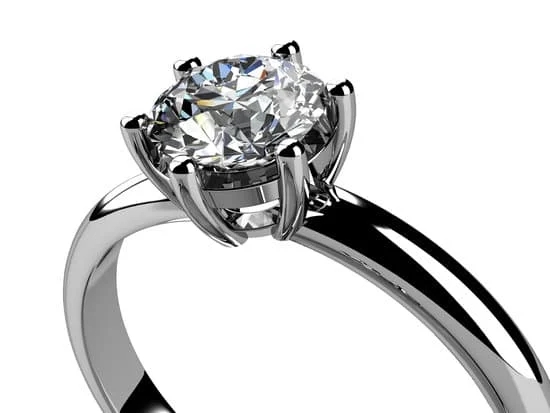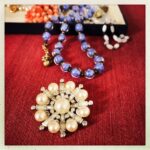Gemstones have long been treasured for their beauty and rarity, making them a popular choice in the world of jewelry making. From vibrant rubies to mesmerizing opals, gemstones add an element of elegance and sophistication to any piece of jewelry. This article will explore the art of making jewelry with gemstones, providing you with all the necessary information to create stunning pieces that reflect your personal style.
Gemstones can be defined as natural minerals that are cut and polished for use in jewelry. Each gemstone boasts unique colors, patterns, and properties, giving it a distinct allure. The intricate process of cutting and shaping these stones transforms them into magnificent gems that captivate the eye. Gemstone jewelry holds immense significance as it not only enhances one’s appearance but also symbolizes various meanings and feelings.
The popularity of gemstone jewelry stems from the undeniable appeal and charm they possess. Whether it’s a dazzling emerald pendant or a sparkling amethyst ring, gemstone jewelry never fails to make a statement. With such a wide range of gemstones readily available, there is something to suit every taste and style. It’s no wonder that people turn to gemstone jewelry as a means of self-expression and adornment.
In this comprehensive guide, we will delve into the fascinating world of creating jewelry with gemstones. We will explore different types of gemstones commonly used in jewelry making and provide you with an overview of their characteristics and colors.
Additionally, we will discuss the essential tools required for this craft as well as tips on selecting the right gemstones for your unique style. So gather your materials, unleash your creativity, and get ready to embark on an exciting journey into the artistry of gemstone jewelry-making.
Types of Gemstones Used in Jewelry Making
Gemstones are a popular choice for jewelry making due to their beauty, durability, and variety. There are numerous types of gemstones that can be used to create stunning jewelry pieces. Each gemstone has its own unique characteristics and colors, allowing for endless possibilities in design. Whether you prefer classic diamonds or vibrant colored gemstones, there is a wide range of options to choose from when it comes to gemstone jewelry.
Overview of Different Types of Gemstones
One of the most popular gemstones used in jewelry making is the diamond. Known for its sparkle and brilliance, diamonds are highly valued and often used as the centerpiece in engagement rings and other fine jewelry. Other commonly used gemstones include sapphires, rubies, emeralds, and pearls. Sapphires come in various colors such as blue, pink, yellow, and green and are known for their hardness and durability.
Rubies are prized for their rich red color and are often associated with love and passion. Emeralds offer a vibrant green hue that exudes an air of elegance. Pearls provide a classic look that is timeless and versatile.
Characteristics and Colors of Gemstones
Each type of gemstone has its own unique characteristics that make it distinct from others. Diamonds are known for their strong fire (refractive properties), clarity (freedom from flaws), colorlessness (except for fancy colored diamonds), carat weight (size), and hardness (10 on the Mohs scale). Sapphires are valued based on their color intensity, with deep blue being the most desirable hue.
Rubies are prized for their intense red coloration caused by traces of chromium within the mineral corundum. Emeralds are known for their vivid green color with various hues ranging from bluish-green to pure green. Pearls come in different shapes, sizes, colors, luster levels, and overtones, making each pearl unique.
When choosing gemstones for jewelry making, it’s important to consider personal style and preferences. Some individuals may prefer the classic elegance of diamonds, while others may gravitate towards the vibrant colors of sapphires or rubies. The hardness of a gemstone is also a factor to consider depending on the intended use of the jewelry piece. Ultimately, selecting gemstones that resonate with your personal style will ensure that your jewelry is a reflection of your individuality.
Tools and Materials Needed for Jewelry Making with Gemstones
To create beautiful jewelry with gemstones, there are several tools and materials that you will need. These essential items will help you in the process of designing and crafting your unique pieces. Here is a list of some of the important tools and materials needed for jewelry making with gemstones:
Tools:
- Pliers: You will need a set of jewelry-making pliers, including chain-nose pliers, round-nose pliers, and flat-nose pliers. These tools are used for shaping wire, opening or closing jump rings, and holding small components securely.
- Wire Cutters: A good pair of wire cutters is essential for cutting through different types of wires used in jewelry making. It allows you to cleanly trim excess wire without damaging the material.
- Beading Mat: This non-slip mat provides a soft surface for working with small beads and gemstones, preventing them from rolling away or getting lost.
- Jewelry Saw: If you plan to make intricate designs or cut metal components, a jeweler’s saw with various blade sizes is necessary.
Materials:
- Gemstone Beads: Select a variety of gemstone beads in different shapes, sizes, and colors to add beauty and diversity to your designs.
- Wire: Depending on your project, you will need different gauges (thicknesses) of wire such as sterling silver wire or gold-filled wire for creating loops, clasps, and other elements.
- Chains: Choose chains in various lengths and styles to create necklaces or bracelets to showcase your gemstone beads.
- Findings: Findings include clasps, jump rings, ear wires, and other components that provide functionality to your jewelry pieces.
| Tools | Materials |
|---|---|
| Pliers | Gemstone beads |
| Wire cutters | Wire |
| Beading mat | Chains |
| Jewelry saw | Findings |
Having these tools and materials at your disposal will make the process of creating gemstone jewelry much easier and enjoyable. However, it’s important to remember that this list is not exhaustive, and there may be additional tools or materials specific to certain techniques or designs. Experiment with different combinations and continue to expand your collection as you gain experience and develop your own style in jewelry making.
Choosing the Right Gemstones for Your Style
When it comes to making jewelry with gemstones, choosing the right gemstones for your style is crucial. The gemstones you select will not only determine the aesthetic appeal of your jewelry but also reflect your personal taste and preferences. Here are some tips to help you choose the perfect gemstones that align with your style:
- Consider color: Gemstones come in a wide variety of colors, so it’s important to consider which colors resonate with you. Think about whether you prefer bold and vibrant hues or softer pastel shades. Additionally, consider how different gemstone colors complement your skin tone.
- Know your birthstone: One way to personalize your gemstone jewelry is by incorporating your birthstone. Birthstones have been associated with various qualities and symbolism throughout history. Consult a birthstone chart to find out which gemstone corresponds to your birth month.
- Take into account hardness: Gemstones vary in their hardness levels, which can affect how durable they are for everyday wear. If you’re planning to create a piece that will be worn frequently, opt for harder gemstones like diamonds or sapphires that can withstand daily use.
- Consider clarity and transparency: Some gemstones have greater clarity and transparency than others. This can impact the overall appearance of the stone as well as its value. Decide whether you prefer gemstones that are flawless and transparent or if you appreciate unique inclusions and imperfections.
Taking these factors into consideration when choosing gemstones will ensure that you create jewelry that reflects your personal style and resonates with you on a deeper level.
Basic Techniques for Setting Gemstones in Jewelry
Setting gemstones in jewelry requires skill and precision to ensure that the stones are securely held in place while showcasing their natural beauty. There are several basic techniques that can be used to set gemstones, each offering different looks and levels of complexity. Whether you are a beginner or experienced jeweler, learning these techniques will allow you to create stunning gemstone jewelry pieces.
One common technique for setting gemstones is the prong setting. This involves using metal prongs to hold the gemstone in place by gripping its edges. Prong settings are popular for their simplicity and ability to showcase the stone’s brilliance and sparkle. They can be used for various types of jewelry, including rings, necklaces, and earrings. In this technique, it is important to ensure that the prongs are properly positioned and evenly spaced around the stone for optimal security.
Another technique is the bezel setting, which involves creating a metal rim that completely surrounds the gemstone. This provides excellent protection for the stone while creating a sleek and modern look. Bezels can be full or partial, depending on the desired design. To create a bezel setting, jewelers need to measure and cut an appropriate size and shape of metal strip or sheet to fit around the gemstone tightly.
Wire wrapping is another popular technique that allows for creative designs while securely holding gemstones in place. This technique involves manipulating thin wire around a gemstone’s frame or using coils to create decorative elements within a piece of jewelry. Wire wrapping can be used with various types of gemstones and offers endless design possibilities.
| Setting Technique | Description |
|---|---|
| Prong Setting | Involves using metal prongs to grip onto the edges of a gemstone. |
| Bezel Setting | Creates a metal rim that surrounds the entire gemstone for protection. |
| Wire Wrapping | Involves manipulating thin wire to hold a gemstone or create decorative elements. |
When setting gemstones in jewelry, it is crucial to choose the right technique based on the desired design and level of expertise. Beginners may start with simpler techniques like wire wrapping before progressing to more complex methods such as prong or bezel settings. It is also important to practice patience and precision when working with gemstones to avoid any damage or loss during the setting process.
By mastering these basic techniques for setting gemstones, jewelry makers can create unique and beautiful pieces that showcase their chosen gems in an elegant and secure manner. Whether you are making a statement necklace or a delicate pair of earrings, understanding and practicing these techniques will open up endless possibilities for your gemstone jewelry designs.
Design Ideas and Inspiration for Gemstone Jewelry
Gemstone jewelry offers endless possibilities for unique and stunning designs. Whether you’re a beginner or an experienced jewelry maker, the design ideas and inspiration for gemstone jewelry can spark your creativity and help you create beautiful pieces. Here are some design ideas to consider when it comes to incorporating gemstones into your jewelry:
Rings
- Stacking rings: Create a stack of thin, delicate rings with different gemstones to add color and vibrancy to your fingers.
- Birthstone rings: Birthstones are a popular choice for personalized jewelry. Design a ring with the birthstones of loved ones or create a custom birthstone ring using gems that represent each family member’s birth month.
- Statement rings: Make a bold statement by using large, eye-catching gemstones as the focal point of your ring design.
Necklaces
- Pendant necklaces: Attach a striking gemstone pendant to a chain or cord to create an elegant and versatile necklace.
- Layered necklaces: Combine multiple necklaces with different lengths, each featuring a unique gemstone pendant, for a trendy layered look.
- Choker necklaces: Use smaller-sized gemstones to create dainty choker necklaces that are perfect for everyday wear.
Earrings
- Drop earrings: Design elegant drop earrings by attaching gemstone beads or briolettes to simple earring findings. Experiment with different shapes and colors for endless variety.
- Hoop earrings: Add small gemstone charms or dangles onto hoop earrings for an extra touch of sparkle and color.
- Stud earrings: Set small gemstones in bezel settings or prong settings to create classic and versatile stud earrings.
To find further inspiration for your gemstone jewelry designs, browse through magazines, online platforms, or visit local jewelry stores. Pay attention to different styles, shapes, and combinations of materials used in various pieces. Additionally, you can attend jewelry making workshops or join online forums where fellow jewelry makers share their designs and ideas.
Remember, the beauty of gemstone jewelry lies in its uniqueness and personal touch. Experiment with different gemstones, settings, and techniques to create one-of-a-kind pieces that reflect your personal style and creative vision. Let your imagination run wild, and have fun turning gemstones into wearable works of art.
Care and Maintenance of Gemstone Jewelry
Gemstone jewelry is not only beautiful but also valuable, making proper care and maintenance essential to ensure its longevity. By taking the necessary steps to clean, store, and handle your gemstone jewelry correctly, you can enjoy its dazzling beauty for years to come. This section will provide you with some tips on how to care for your gemstone jewelry effectively.
Cleaning Gemstone Jewelry
Regular cleaning is crucial to maintain the brilliance of your gemstones. However, it’s important to note that different gemstones require specific cleaning methods. Some gemstones are delicate and should not come into contact with harsh chemicals or excessive heat.
- To clean most gemstones, use a soft cloth or brush dipped in warm water.
- For tougher grime or dirt, use mild soapy water and gently scrub the jewelry.
- Avoid using abrasive cleaners or toothpaste as they can scratch certain gemstones.
- After cleaning, rinse the jewelry thoroughly with water and pat it dry with a soft cloth.
Storing Gemstone Jewelry
Proper storage can prevent damage and minimize the risk of your gemstone jewelry getting tangled or scratched. Here are some guidelines for storing your precious pieces:
- Keep each piece of jewelry separate to prevent scratching.
- Store in individual compartments or fabric-lined boxes to protect against moisture and impact damage.
- Avoid storing gemstone pieces together with other harder materials like metal or diamonds.
- When traveling, place your jewelry in a padded pouch or wrap it in a soft cloth before keeping it securely in your luggage.
Handling Gemstone Jewelry
How you handle your gemstone jewelry on a day-to-day basis can greatly impact its condition. Take note of the following tips:
- Remove jewelry before engaging in activities that may subject it to excessive force or impact.
- Avoid exposure to harsh chemicals such as bleach, perfumes, and household cleaners that can damage or discolor gemstones.
- Put on your gemstone jewelry after applying lotions, creams, or makeup to prevent product buildup.
- When wearing multiple pieces of jewelry, put on your gemstone pieces last to avoid scratching them against harder materials.
By following these care and maintenance tips, you can preserve the beauty and quality of your gemstone jewelry. With proper cleaning, storage, and handling, your cherished pieces will continue to sparkle and bring joy for generations to come.
Popular Gemstone Combinations and Pairings
When it comes to creating stunning gemstone jewelry, selecting the right combination of gemstones is essential. Certain gemstones naturally complement each other, resulting in beautiful and harmonious designs. In this section, we will explore some popular gemstone combinations and pairings that you can incorporate into your own jewelry creations.
One classic combination that never fails to captivate is the pairing of amethyst and moonstone. Amethyst, with its rich purple hues, blends seamlessly with the ethereal shimmer of moonstone. This combination creates a captivating play of colors, with the deep purples of amethyst enhancing the iridescent glow of moonstone. Whether used in necklaces or earrings, this combination exudes an aura of elegance and mystique.
For those looking for a vibrant burst of color, incorporating garnet and peridot can result in an eye-catching design. The deep reds of garnet contrast beautifully with the fresh greens of peridot, creating a lively and energetic combination. This pairing is perfect for statement pieces such as cocktail rings or bold pendant necklaces.
Another popular gemstone pairing is turquoise and coral. This dynamic duo brings together the serene blues of turquoise with the fiery reds of coral. The contrasting colors create a striking visual impact, making it an ideal choice for bohemian-inspired jewelry or beachy accessories.
In addition to aesthetic considerations, certain gemstone combinations hold symbolic meanings as well. For instance, combining amethyst and citrine represents balance between spiritual growth (represented by amethyst) and abundance (represented by citrine). Thus, when designing jewelry for specific intentions or occasions, considering these symbolic associations can add depth and significance to your pieces.
As you explore different gemstone combinations and pairings, don’t be afraid to experiment and trust your intuition. Ultimately, selecting gemstones that resonate with your personal style and preferences will ensure that your jewelry creations are both meaningful and visually stunning. Now that you have learned about popular gemstone combinations, it’s time to start creating your own unique gemstone jewelry designs.
Conclusion
In conclusion, making jewelry with gemstones is not only a creative and fulfilling hobby, but it also allows you to create unique pieces that reflect your personal style and preferences. In this article, we have explored the significance of gemstones in jewelry making and discussed the various types of gemstones commonly used. We have also provided information on the tools and materials needed for creating gemstone jewelry, as well as tips for choosing the right gemstones for your style.
Furthermore, we have delved into basic techniques for setting gemstones in jewelry settings and offered design ideas and inspiration through stunning visual examples. It is important to note that caring for your gemstone jewelry is crucial to maintain its beauty and longevity, and we have provided helpful tips on cleaning, maintenance, storage, and handling.
Now that you have gained a comprehensive understanding of making jewelry with gemstones, it is time to unleash your creativity and start creating your own unique pieces. Whether you are a beginner or an experienced enthusiast, there are endless possibilities for designing beautiful gemstone jewelry. Remember to explore different combinations and pairings of gemstones to create visually striking designs.
If you wish to further expand your knowledge and skills in this craft, there are plenty of resources available such as books or online tutorials that can provide additional guidance. The world of gemstone jewelry making awaits you – so go ahead, let your imagination soar, and start creating your own one-of-a-kind pieces today.
Frequently Asked Questions
How are gemstones made into jewellery?
Gemstones are made into jewelry through a complex process that involves several steps. First, gemstone mining takes place to extract these precious minerals from the earth. Once the gemstones are extracted, they go through a rigorous sorting and grading process based on their quality, size, color, and clarity. Then, skilled gem cutters use specialized tools and techniques to shape the rough gemstones into desired shapes such as faceted cuts or cabochons.
After being cut, the gemstones may be polished to enhance their luster and beauty. These finished gemstones are then carefully set into jewelry settings made of various materials like gold, silver, or platinum by expert jewelers. The type of setting used depends on the design and desired aesthetic of the final piece. Finally, any additional embellishments like diamonds or other smaller gems may be added as accents to enhance the overall appearance of the jewelry piece.
How to start a gem jewelry business?
Starting a gem jewelry business requires careful planning and consideration of several factors. First and foremost, it is important to conduct thorough market research to identify your target audience, analyze competitors, and determine your unique selling proposition in order to differentiate yourself in the market. Setting up a solid business plan that encompasses aspects such as sourcing reliable suppliers for raw gemstones or finished jewelry pieces is crucial. Developing relationships with trusted suppliers ensures that you have access to high-quality stones at competitive prices.
Establishing an online presence through a website or social media platforms can help reach a broader customer base beyond just local markets. It is also beneficial to participate in trade shows or exhibitions where potential customers can see your products firsthand. Additionally, investing in marketing strategies like digital advertising or collaborations with influencers can increase brand visibility and attract customers.
Do jewelers buy raw gemstones?
Yes, jewelers do buy raw gemstones as part of their business operations; however, this varies among different jewelers based on their specific focus and preferences. While some jewelers might prefer buying pre-cut gemstones or finished jewelry pieces, others have an interest in purchasing raw gemstones to use their expertise in cutting and shaping them. Buying raw gemstones allows jewelers to exercise creativity by designing customized pieces tailored to the specific desires of their clientele.
By buying directly from gemstone miners or reputable suppliers, jewelers can ensure the authenticity and quality of the stones they acquire. It is essential for jewelers to have a good understanding of identifying genuine gemstones, differentiating them from synthetic imitations or treated stones, as this helps in making informed purchasing decisions. The purchase of raw gemstones gives jewelers more control over the end product and also enables them to offer unique designs that stand out in the market.

Welcome to my jewelry blog! My name is Sarah and I am the owner of this blog.
I love making jewelry and sharing my creations with others.
So whether you’re someone who loves wearing jewelry yourself or simply enjoys learning about it, be sure to check out my blog for insightful posts on everything related to this exciting topic!





